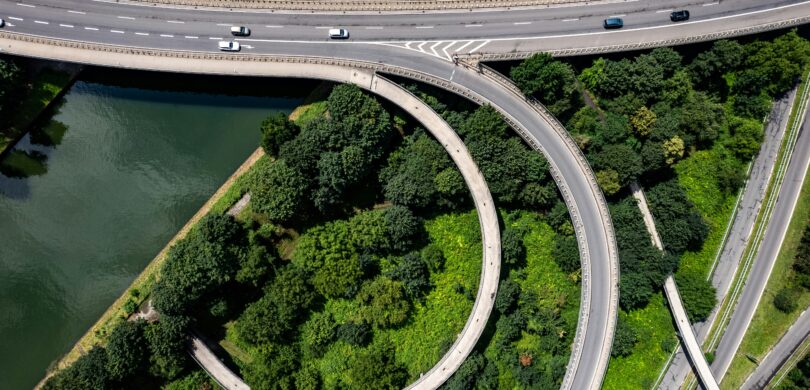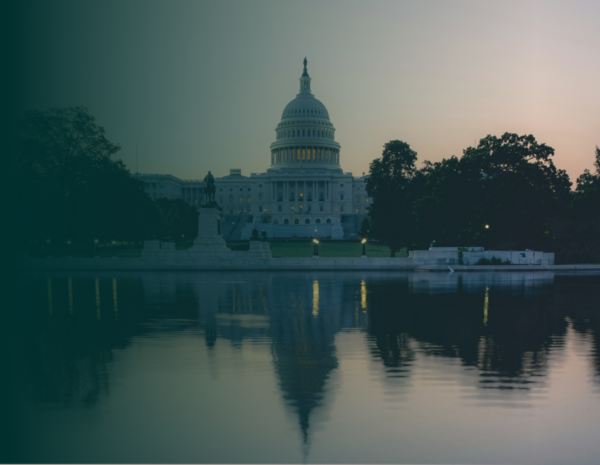Infrastructure holds the country together. Will infrastructure policy divide it?
Americans tend to agree on the importance of roads, bridges, ports, and pipes. Agreement on how to fund and get these projects going is less common. With November 5th nearing, many are wondering how infrastructure policy might impact the election. In this blog, we examine types of infrastructure, recent infrastructure policies, and each candidate’s record.
What is Infrastructure Policy?
Infrastructure policy is how governments manage society’s foundational structures – things like roads, bridges, water and electric utilities, telephone lines, and internet cables.
In the United States, most funding for infrastructure projects comes from public investments by state and local governments. However, the proportion of federal spending began to increase in 2020. The federal government plays a role in infrastructure through Congress, which has the power to regulate interstate commerce and support it with legislation. Most of its funding goes to highway transportation, though spending on rail, mass transit, and water has increased in recent years.
Reliable and resilient infrastructure is important for economic growth. Both businesses and households typically need access to electricity, water, and waste management. They rely on the movement of goods and people across roads, railroads, waterways, and air, along with the flow of information across telephone and internet cables. Infrastructure projects create jobs for workers who build and maintain them. They also raise demand for the materials needed to construct them. Thoughtful infrastructure policy can have a big impact on a local, statewide, and national scale.
Key Topics in Infrastructure Policy
Infrastructure policy can touch a variety of fields and industries.
Transportation
When people think of infrastructure, they often think of highways, bridges, and tunnels – the structures that enable transportation. Funding is needed not only to construct or replace this infrastructure but also to maintain it.
Power and Energy
Transmission lines bring electricity from power generation plants to communities across the country. The United States power grid is made up of several different regional grids with limited interconnection. In some areas, power plants struggle to keep up with the demand for electricity when it surges. In others, severe weather can damage equipment and interfere with power transmission on a large scale. Heat waves and fires have caused rolling blackouts in California in 2020, while an ice storm in Texas took out power for millions of people in 2021.
Improvements to the grid can help it withstand extreme weather and adapt to surges in demand. This is especially important as electric vehicles grow in popularity. Maintenance is also critical to help keep energy infrastructure from falling into disrepair. In the meantime, encouraging energy efficiency can help bring demand down and reduce impacts on the environment.
Due to growing concerns about fossil fuels’ impact on climate change, many advocate for cleaner alternatives such as solar, wind, hydro, and nuclear power.
Telecommunications
Telecommunications infrastructure allows us to talk, work, learn, shop, and receive services across long distances. A hot topic in telecommunications infrastructure is high-speed broadband Internet access. Low-income and rural communities tend to have lower access to broadband Internet than others. This “digital divide” can lead to unequal access to schooling, job opportunities, healthcare, and more. Encouraging the expansion of infrastructure to less populated areas, along with making Internet access more affordable, helps to close this divide.
Water and Waste Management
Infrastructure like underground pipes and water treatment systems ensure that communities have access to clean water. Landfills, recycling centers, and wastewater treatment plants help with the sanitary management of waste.
Water infrastructure is a more popular topic of public discussion than waste management. Government-funded projects can include updating water treatment facilities, replacing toxic lead pipes with modern ones, and improving water storage and drought resilience.
President Biden’s Infrastructure Accomplishments
In 2021, President Joe Biden signed the bipartisan Infrastructure Investment and Jobs Act (IIJA) into law. The $1.2 trillion legislation included $550 billion in new spending.
Much of the funding went to transportation, including $100 billion for roads, bridges, and other major projects. The IIJA also made investments in freight and passenger rail, which Biden enthusiastically champions. The broad legislation also invested in:
- Public transit
- Airports
- Port infrastructure
- Electric vehicles
- Low-emission buses and ferries
- Cycling and pedestrian infrastructure
- Broadband internet infrastructure
- Power infrastructure
- Clean drinking water
- Resilience and water storage
- Pollution removal from water and soil
Through August 2024, about $480 billion in federal funding has been announced for more than 60,000 projects. Since the law’s passage in 2022, states with lower-rated infrastructure have received more funding than those with highly-rated infrastructure.
Biden also signed the Inflation Reduction Act in 2022, which passed along party lines. It authorized loans to upgrade or repurpose energy infrastructure, funding for clean energy projects, tax credits for buying electric vehicles, tax credits for producing clean energy products and components, and more.
Harris vs. Trump on Infrastructure Policy
Both Vice President Kamala Harris and former President Donald Trump have stressed the importance of infrastructure. They’ve both proposed plans for increased infrastructure spending. But their approaches differ.
While in office, Trump, a Republican, signed the bipartisan America’s Water Infrastructure Act into law in 2018. It authorized funding for a variety of water infrastructure improvements on navigable waterways, dams, reservoirs, public drinking water systems, and more. It contained the most substantial changes to the Safe Drinking Water Act since 1996.
Trump also proposed a plan with $1.5 trillion in new spending on infrastructure. Just $200 billion of that would have been new federal spending. The rest would’ve come from private investment and state and local governments. While there was some bipartisan support for the plan, Congress could not agree on how it would be funded. Talks ended after Trump asked Congress to support his trade deal before working on the infrastructure bill.
Trump has said he wants to ramp up domestic fossil fuel production and delivery to make the United States more energy-independent. This includes the construction of more pipelines and the removal of some regulations Trump sees as overly restrictive. He has also called for quicker approval and construction of nuclear power plants.
Harris, a Democrat, likely has similar infrastructure priorities to President Biden. As Vice President, she has promoted the administration’s progress in implementing the IIJA. She supports efforts to incentivize clean energy projects and advocates for electric vehicles. During her 2020 presidential campaign, Harris opposed hydraulic fracturing (also called “fracking”) for oil and gas but recently said she would not ban fracking as president.
Infrastructure Policy and the 2024 Election
Infrastructure spending is popular among Americans. There is broad support for improvements to roads, bridges, ports, and water pipes. Democrats were far more likely than Republicans to support funding in the IJJA for broadband Internet, public transit, electric vehicle charging stations, and rail service.
How will infrastructure policy impact the 2024 elections? The topic will be most important to voters who are impacted by infrastructure needs the most — including millions of Americans who have experienced blackouts, water quality problems, failing transportation infrastructure, and limited Internet access. About 30% of Americans say infrastructure is a “very big problem” in the country today. Their votes may depend on who they believe will solve it.
Get Started With Plural
Top public policy teams trust Plural with their legislative tracking needs. With Plural, you’ll:
- Access superior public policy data
- Be the first to know about new bills and changes in bill status
- Streamline your day with seamless organization features
- Harness the power of time-saving AI tools to gain insights into individual bills and the entire legislative landscape
- Keep everyone on the same page with internal collaboration and external reporting all in one place
More Public Policy Resources
Key Benefits of AI for Lobbying & Advocacy
Want to be able to explain the benefits of artificial intelligence for lobbying and advocacy? Everyone is talking about AI. And we get it, it’s not simple to understand. But as an AI-powered organization, Plural is here to help you get the most out of advancements in AI to make your job as a policy […]
2025 Legislative Committee Deadlines Calendar
Staying on top of key deadlines is manageable in one state, but if you’re tracking bills across multiple states, or nationwide, it quickly becomes overwhelming. That’s why we created the 2025 Legislative Committee Deadlines Calendar. Stay ahead of important dates and download our calendar today. Get started with Plural. Plural helps top public policy teams get […]
End of Session Report: Florida 2024 Legislative Session
The 2024 Florida legislative session saw significant activity in the realm of insurance and financial services, reflecting key themes of consumer protection, market stability, and regulatory modernization.




